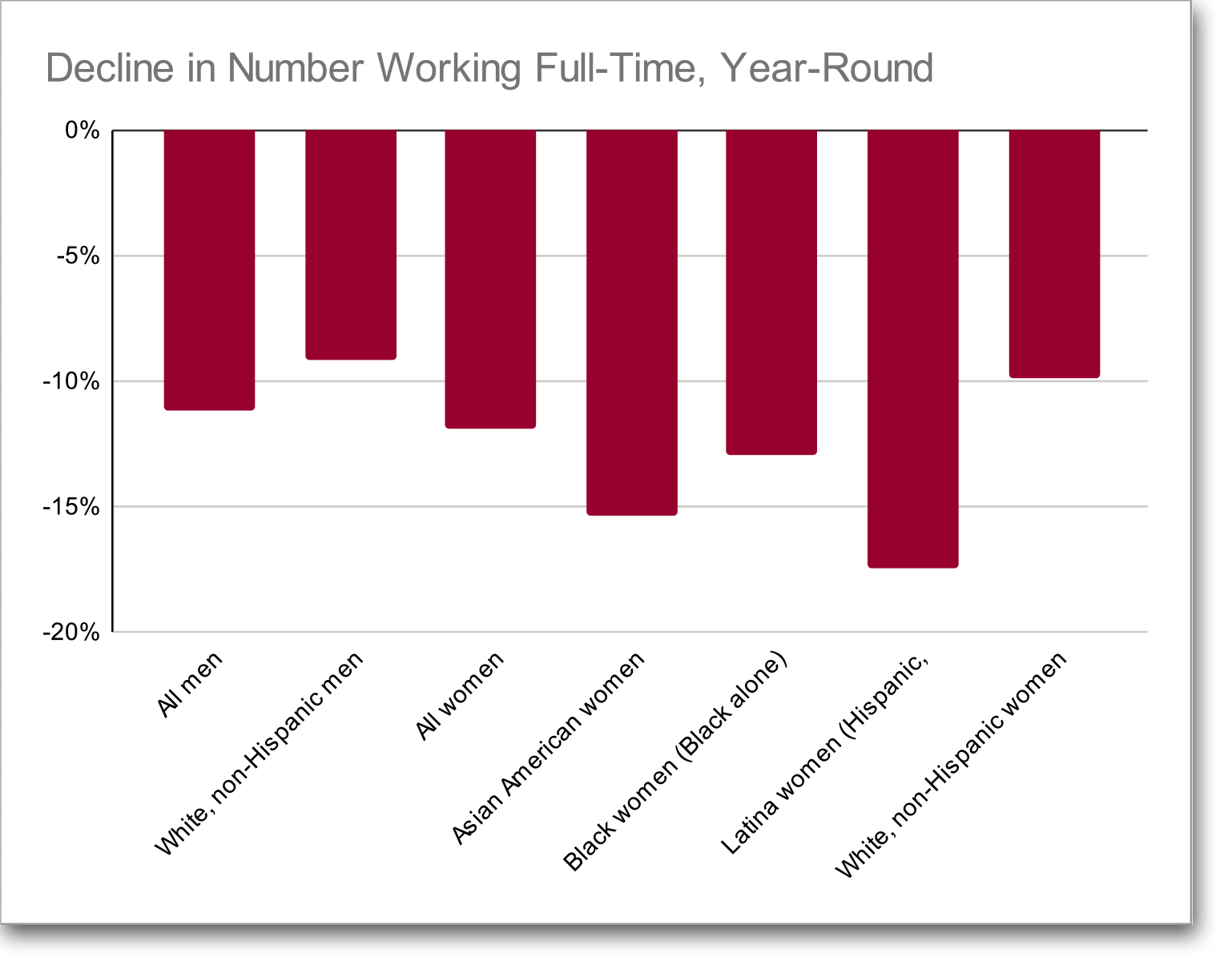There are a lot of fun calendar days when people celebrate things we’re happy about, like the Fourth of July, for fireworks and getting rid of ruling monarchs, or Pi Day, for math and circular pastries.
Equal Pay Day is… the complete opposite.
It’s the day that symbolizes how much longer women typically have to work into the next year just to make the same amount of money men were paid the previous year. We call it the wage gap, and this gap is much wider for women of color, thanks to sexism and racism.
So why observe Equal Pay Day, year after year, if it’s such a bummer? Because the wage gap is a way of talking about the tangible consequences that sexism and racism in our economy have on women. And it touches so many women year after year, no matter their occupation, education level or age.
The latest figures from 2020 show that overall, women working full time, year-round are paid just 83 cents on the dollar compared to men. For Black women, it’s just 64 cents; Latinas, 57 cents; and Asian American, Native Hawaiian and Pacific Islander women, as little as 52 cents – the gap for Burmese women. These numbers, however, do not tell the full story.
The Wage Gap Is Even Wider When We Account for Part-Time Workers
That’s because more than 33 million women who worked part-time or only for part of the year are not counted in the full-time wage gap. This leaves out:
- parents who shifted to part-time work to help their kids with virtual school;
- farmworkers who do essential work but are employed seasonally;
- retail workers who want full-time hours but are kept part-time so they’re not eligible for benefits; and
- child care workers who were laid off for part of the year after pandemic shutdowns.
Women, and disproportionately women of color, are a majority of workers who work part-time or spend part of the year out of the workforce for health or caregiving reasons.
Focusing only on the full-time wage gap understates the barriers many women face, because part-time jobs also tend to have lower pay, fewer benefits and less flexibility — especially in industries where women of color are concentrated, like the food industry, retail, child care and health care.
Then the Pandemic Hit
 Even before the pandemic, the full-time wage gap left out more than 28 million women who worked part-time or spent part of the year out of work. But in 2020, the pandemic caused unprecedented health and caregiving needs, losses in employment and cutbacks in work hours, with some of the most acute drops among Latina, Black, and AANHPI women.
Even before the pandemic, the full-time wage gap left out more than 28 million women who worked part-time or spent part of the year out of work. But in 2020, the pandemic caused unprecedented health and caregiving needs, losses in employment and cutbacks in work hours, with some of the most acute drops among Latina, Black, and AANHPI women.
Particularly during early days of the pandemic in 2020, we all know women — or have been the women — who had to quickly improvise a game plan as child care options vanished, schools suddenly shifted to remote learning and other caregiving responsibilities arose. More than 65 million women provided unpaid care in the form of child care, family care and/or eldercare during 2020.
The fact that we still treat caregiving as primarily women’s work — while providing little policy support for it — contributes significantly to the wage gap. As a result of caregiving pressures, women are often pushed into part-time work or spending time out of the workforce to care for loved ones.
That’s why when we talk about the wage gap, we shouldn’t leave anybody behind. When we account for everybody who worked in 2020, not just those who were able to work full-time, women were paid just 73 cents for every dollar paid to a man. For Asian American, Native Hawaiian, and Pacific Islander women, that’s 75 cents, 58 cents for Black women, 50 cents for Native women, and 49 cents for Latina women.
The wage gap is caused by systemic problems, and that means we all need to pitch in together to fix it. So what can we each do?
Organize
In your own workplace, think about advocating for pay transparency and simple changes like:
- post salary bands in job ads;
- educate your management about how care policies like paid leave can help retain women who have family caregiving needs, and improve gender equity overall;
- talk to your coworkers about forming a union — pay gaps are smaller, and paid leave is more common, among unionized workers!
If you think you might have experienced race- or gender-based harassment or discrimination, contact the Equal Employment Opportunity Commission. Check out eeoc.gov for contact info for your local office.
And for broader change, let your members of Congress know that we need to pass the Paycheck Fairness Act to strengthen our equal pay laws, pass the Pregnant Workers Fairness Act to help ensure pregnant workers aren’t pushed out of a job, and invest in national paid family and medical leave and affordable child care.
Visit nationalpartnership.org/gap to learn more about the wage gap, including data from your own state.


